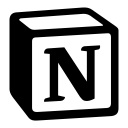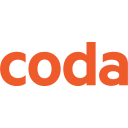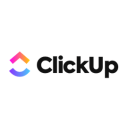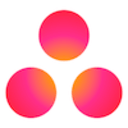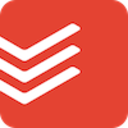Fibery vs ClickUp: Which tool is best for your team?
- 01Fibery vs ClickUp: overview
- 02What's the difference between Fibery and ClickUp?
- 03Fibery pros and cons
- 04ClickUp pros and cons
- 05Fibery compared to ClickUp
- 06ClickUp compared to Fibery
- 07Features comparison
- 08Fibery vs ClickUp: Which is the best for your business?
- 09Promotions on Productivity software
- 10Alternatives to Fibery & ClickUp
Save up to $1,000 on ClickUp
Save up to $1,000 on ClickUp
Effective project management is crucial for enhancing productivity and ensuring the successful delivery of projects within any organization. However, managing tasks, workflows, and team collaboration manually can be cumbersome and inefficient. This is where project management software comes into play. These platforms provide tools to streamline project planning, execution, and team collaboration.
With numerous options on the market, selecting the right software can be daunting. In this article, we compare two notable solutions—Fibery vs ClickUp. By examining their features, pricing structures, and key differences, you can determine which platform is the best fit for your team's needs.
Fibery vs ClickUp: overview
Fibery and ClickUp are two prominent players in the realm of project management and team collaboration software, each offering distinct features tailored to meet the needs of diverse business environments.
Fibery is celebrated for its highly customizable interface that adapts to the complex workflows of product development, software engineering, and project management. It excels in creating interconnected systems where everything from tasks to ideas can be linked and visualized in various formats. Conversely, ClickUp is known for its user-friendly design and robust feature set that includes task management, docs, goal tracking, and real-time collaboration tools, making it ideal for teams seeking an all-in-one project management solution.
Now, let's explore the Fibery vs. ClickUp comparison to help you make an educated decision on the most suitable platform for your team's project management and collaboration requirements.
What's the difference between Fibery and ClickUp?
Fibery and ClickUp are both advanced tools for project management and team collaboration, but they cater to slightly different needs and preferences within organizations.
Fibery is renowned for its flexibility and adaptability, positioning itself as a tool that grows with your team. It allows users to create their own tools within its ecosystem, making it particularly appealing to teams that need highly customizable workflows. This feature is especially useful for complex projects where interconnectivity and relational databases play a critical role, such as in software development and product management. Fibery also emphasizes its capabilities in handling large volumes of interconnected data, supporting deep work management with features like whiteboards, entity linking, and rich text editing.
In contrast, ClickUp aims to be an all-in-one project management solution with an extensive suite of features that include task assignments, document management, goal tracking, and even an email integration that allows users to manage communication directly within the platform. ClickUp's strength lies in its user-friendly interface and robust functionality that covers not just project management but also other areas of business operations, making it suitable for a broader range of business types and sizes. It offers a wide array of views such as List, Board, and Gantt, ensuring that every team member can find a way to visualize their work that suits them best.
The primary differences between Fibery and ClickUp come down to their target users and the complexity they cater to. Fibery is more suited for teams that require a platform that can be intricately customized to fit complex and evolving processes. ClickUp, however, is more focused on providing a comprehensive, ready-to-use platform that simplifies project management for almost any type of business or team.
Another distinction is in their pricing models. Fibery offers a free tier and straightforward pricing based on the number of users, which is beneficial for startups and small teams. ClickUp also provides a free tier but its advanced features, available in higher-tier plans, can become costly as teams grow and their needs become more sophisticated. This makes ClickUp potentially more expensive for large teams or those needing extensive functionality.
Both platforms offer various integrations with popular tools like Slack, Google Drive, and GitHub, but ClickUp tends to have a broader range of integrations available, which may be a deciding factor for teams heavily reliant on multiple tools.
20% off Unlimited and Business plans for 1 year on ClickUp
Get 20% off Unlimited and Business plans for 1 year on ClickUp and up to $1,000 savings with Secret.
Fibery pros and cons
What are the advantages of Fibery?
- Flexibility in data modeling: Fibery allows teams to create custom data structures (entities and relationships) that fit their specific workflows, unlike many other tools that are more rigid in their structure.
- Integration of different workflows: It supports integrating various workflows (e.g., product management, marketing, development) within a single platform, which can help teams maintain cohesion and visibility across different functions.
- Customizable views and dashboards: Users can create personalized views and dashboards to visualize data in ways that suit their needs best, enhancing clarity and productivity.
- Relationships between entities: It allows for establishing complex relationships between different entities (e.g., tasks, projects, teams), which is beneficial for managing interconnected work items effectively.
- API and automations: Fibery provides an API for custom integrations and automations, enabling teams to extend its functionality and integrate with other tools as needed.
What are the disadvantages of Fibery?
- Complexity in setup: Setting up Fibery to match specific organizational needs can be complex and time-consuming due to its flexibility in data modeling.
- Learning curve: Due to its flexibility and the range of features it offers, there is a learning curve involved for new users to fully grasp and utilize all its capabilities.
- Performance and scalability: Some users have reported issues with performance and scalability as the complexity and volume of data increase, which may affect larger teams or projects.
- Limited native integrations: While Fibery offers an API for custom integrations, its out-of-the-box integrations with other popular tools may be more limited compared to more established platforms.
- Interface and user experience: The interface design and user experience may not be as polished or intuitive as some other project management tools, potentially affecting ease of use for some users.
Compare Fibery to other tools
ClickUp pros and cons
What are the advantages of ClickUp?
- Feature-rich platform: ClickUp offers a wide range of features including task management, project tracking, goal setting, time tracking, document collaboration, and more. This makes it a versatile tool suitable for various types of teams and projects.
- Customizable workspaces: Users can create customizable workspaces, views, and dashboards tailored to their specific needs. This flexibility allows teams to organize and manage tasks and projects in a way that best fits their workflow.
- Integration capabilities: ClickUp integrates with many third-party tools and services such as Slack, Google Drive, GitHub, and more. This helps teams streamline their workflows by connecting ClickUp with other tools they already use.
- Hierarchy and organization: ClickUp supports hierarchical task structures (tasks, subtasks, checklists) and allows for nesting projects within folders and lists. This hierarchical organization helps teams manage complex projects more effectively.
- User-friendly interface: ClickUp has a modern and intuitive interface that is relatively easy to navigate. It offers a clean design with customizable layouts, making it accessible for both new and experienced users.
What are the disadvantages of ClickUp?
- Complexity for new users: Despite its user-friendly interface, ClickUp can be overwhelming for new users due to its extensive feature set and customizable options. There is a learning curve involved in fully understanding and utilizing all its capabilities.
- Performance issues: Some users have reported occasional performance issues such as slow loading times, especially when dealing with large amounts of data or complex project structures. This can impact user experience, particularly for larger teams.
- Steep pricing tiers: ClickUp's pricing structure can be considered steep for smaller teams or individual users who may not need all the advanced features included in higher-tier plans. It might not be as cost-effective compared to simpler tools for basic task management needs.
- Limited offline functionality: ClickUp's offline capabilities are somewhat limited, which can be a drawback for users who need to access and update tasks without an internet connection.
- Customer support challenges: While ClickUp offers customer support via chat and email, some users have reported challenges in receiving timely responses or comprehensive assistance, particularly during peak times.
Compare ClickUp to other tools
Fibery compared to ClickUp
Fibery and ClickUp each offer distinct advantages in project management. Fibery stands out with its unparalleled flexibility in data modeling, allowing customized structures for diverse workflows. It excels in integrating multiple workflows within a cohesive platform, bolstered by customizable views and robust relationship management.
However, Fibery may present a steeper learning curve and requires more effort to set up due to its complexity. ClickUp, on the other hand, boasts a rich feature set with intuitive usability and extensive integration capabilities, making it ideal for teams needing comprehensive project management tools without sacrificing ease of use.
Is Fibery better than ClickUp?
When comparing Fibery and ClickUp, it is essential to consider the specific needs of your team. ClickUp often wins favor for its user-friendly interface and quick setup, catering especially well to teams that prioritize straightforward, plug-and-play solutions. Its intuitive design is complemented by powerful automation and collaboration features, which streamline project management processes and enhance team productivity.
Conversely, Fibery's advanced customization appeals to organizations that require complex data manipulation and unique workflow integration, benefiting those willing to invest time in mastering its system.
What is Fibery best used for?
Fibery is best used for teams and organizations that require highly customizable and interconnected workflows. Its strength lies in flexible data modeling, allowing users to define complex relationships between various entities such as tasks, projects, and teams. This makes Fibery particularly suited for managing interconnected work items across different functions like product development, marketing campaigns, or project management.
Its customizable views and dashboards further enhance clarity and productivity, catering to teams looking to tailor their project management processes precisely to their needs without being constrained by predefined structures.
Can Fibery replace ClickUp?
Whether Fibery can replace ClickUp depends on specific team needs. Fibery excels in highly customizable data structures and interconnected workflows, making it ideal for complex project management across diverse functions.
However, ClickUp offers a broader feature set with intuitive usability and extensive integrations, catering to a wide range of project management needs. Teams requiring deep customization and flexibility may find Fibery more suitable, while those prioritizing ease of use and comprehensive features might prefer ClickUp.
Is Fibery cheaper than ClickUp?
Fibery's pricing compared to ClickUp varies based on team size and feature requirements. Generally, Fibery offers a more straightforward pricing structure with a free plan for small teams and startups, while ClickUp provides tiered pricing with more features at higher levels.
Depending on the scope of customization and integration needed, Fibery's costs may remain competitive, especially for teams seeking tailored workflows without extensive additional costs. ClickUp's pricing tiers may suit larger teams needing a broader feature set and robust integration options.
Is there a better Productivity software than Fibery?
When considering alternatives to Fibery for customizable project management and workflow integration, it's essential to explore whether another platform might better suit your specific requirements.
Some notable alternatives to Fibery in the project management and collaboration space include ClickUp, Notion, Asana, Monday.com, and Trello. The decision on which platform to choose depends on factors such as the level of customization needed, ease of use, integration capabilities with other tools, scalability, and overall cost-effectiveness. While Fibery stands out for its flexibility in data modeling and interconnected workflows, these alternatives may offer different strengths such as user interface design, feature richness, or seamless integration with popular third-party applications.
ClickUp compared to Fibery
ClickUp and Fibery offer distinct approaches to project management. ClickUp emphasizes a comprehensive feature set with intuitive usability, making it accessible for teams of all sizes. It excels in providing a structured yet flexible environment with robust task management, goal tracking, and extensive integrations.
In contrast, Fibery stands out for its unparalleled flexibility in data modeling, allowing deep customization of workflows and relationships between entities. It targets teams needing highly tailored project structures across different functions.
Is ClickUp better than Fibery?
The choice between ClickUp and Fibery often boils down to the nature and complexity of the projects a team manages. ClickUp shines for its all-in-one solution that's easy to adopt, providing immediate productivity boosts through its extensive task and project management tools. This makes it a favored choice for teams seeking quick deployment and minimal training.
Additionally, ClickUp's ongoing updates focus on enhancing user experience and broadening its capabilities, further increasing its appeal. For teams that prioritize ease of use and comprehensive features over complex customization, ClickUp typically emerges as the superior option compared to Fibery.
What is ClickUp best used for?
ClickUp is best used for teams seeking a versatile and feature-rich project management solution. It excels in organizing tasks, projects, and goals with its structured yet customizable approach. ClickUp is ideal for enhancing team collaboration through its intuitive interface and extensive integration capabilities, catering to various industries and project complexities. It supports agile methodologies with robust task tracking, time management, and reporting functionalities.
Whether managing simple to complex projects, ClickUp provides the tools to streamline workflows, improve productivity, and achieve organizational goals effectively, making it a preferred choice for teams looking for comprehensive project management solutions.
Can ClickUp replace Fibery?
Whether ClickUp can replace Fibery depends on specific team needs. ClickUp offers a broad range of features including task management, goal tracking, time tracking, and extensive integrations, making it suitable for diverse project management needs.
However, Fibery stands out for its unparalleled flexibility in data modeling and customization, ideal for teams requiring intricate workflow structures and deep relationship management across different functions. Choosing between ClickUp and Fibery hinges on whether your team values comprehensive feature sets and ease of use or prioritizes deep customization capabilities and interconnected workflows tailored to specific organizational needs.
Is ClickUp cheaper than Fibery?
ClickUp and Fibery vary in pricing structures based on features and team size. Generally, ClickUp offers tiered pricing plans with varying levels of features and capabilities, catering to different organizational needs and budgets.
In contrast, Fibery provides a more straightforward pricing model with options including a free plan for smaller teams. Evaluating which platform is more cost-effective depends on factors such as the extent of customization required, integration needs, and the size of the team. ClickUp's tiered pricing may appeal to larger teams needing a broad feature set, while Fibery's simplicity and free plan options could benefit smaller teams on a budget.
Is there a better Collaboration software than ClickUp?
When considering alternatives to ClickUp for project management and collaboration, it's essential to evaluate if there's a platform that better suits your team's unique requirements.
Some notable alternatives to ClickUp in the project management and productivity space include Wrike, Teamwork.com, Coda, Airtable, and Basecamp.
Choosing the right project management software depends on factors such as your team's workflow preferences, scalability needs, integration capabilities with other tools, and budget considerations. While ClickUp offers a comprehensive suite of features with intuitive usability and extensive integrations, other platforms may excel in specific areas such as simplicity of interface, specialized project tracking functionalities, or unique team collaboration tools.
20% off Unlimited and Business plans for 1 year on ClickUp
Get 20% off Unlimited and Business plans for 1 year on ClickUp and up to $1,000 savings with Secret.
Features comparison
Both Fibery and ClickUp Offer Superb Custom Workflow Capabilities
Both Fibery and ClickUp offer excellent capabilities to build custom workflows. Fibery excels with its no-code platform, enabling users to build custom apps and automate processes seamlessly. For example, teams can create bespoke workflows for project management, issue tracking, and team collaboration without needing extensive technical expertise.
Similarly, ClickUp offers customizable status updates and task workflows, empowering teams to tailor processes to their specific needs and track progress efficiently. This flexibility ensures that both tools provide robust solutions for teams seeking to optimize workflows and enhance productivity through tailored process management capabilities.
Fibery Excels in Software Development Features Over ClickUp
While both Fibery and ClickUp offer robust features for managing various projects, when it comes to software development, Fibery takes the lead. It offers an integrated platform for managing backlogs, sprints, releases, and development wikis. For example, Fibery's automation capabilities streamline workflows, ensuring efficient software development cycles. This specialized functionality supports teams in tracking and analyzing progress, crucial for delivering high-quality software products.
In contrast, ClickUp, while versatile in general project management, lacks the explicit focus on software development processes like backlog management and sprint planning that Fibery provides, making Fibery the preferred choice for teams deeply entrenched in software development practices.
Fibery Leads in Customization While ClickUp Champions Structured Usability
Diving into the user-friendliness of each platform, Fibery and ClickUp demonstrate unique characteristics. While both platforms provide intuitive dashboards, Fibery edges ahead with its highly customizable interface. For instance, Fibery allows users to define intricate relationships between tasks and projects, offering a level of flexibility that ClickUp may find challenging to match.
Moreover, Fibery's ability to tailor workflows to specific team needs enhances usability, particularly for organizations requiring detailed data modeling and interconnected processes. In contrast, ClickUp excels with its structured approach to task management and goal tracking, making it accessible for teams needing a straightforward yet powerful project management solution.
ClickUp Offers Extensive Integrations While Fibery Specializes for Developers
When it comes to integration possibilities, both Fibery and ClickUp showcase robust features, albeit with distinct advantages. ClickUp boasts an extensive network of integrations, surpassing 1,000 third-party apps that span from popular cloud storage solutions to specialized email marketing platforms. This breadth allows for unparalleled customization, catering to diverse user needs.
For example, integrating ClickUp with Slack for seamless team communication or with Zapier for automated workflows enhances operational efficiency across various functions. Conversely, while Fibery supports integrations, its focus leans towards tighter integration with developer tools, appealing particularly to teams entrenched in software development and project management intricacies.
ClickUp Excels Ahead of Fibery for User-Friendly Task Management
Both tools offer task management features, but ClickUp shines with its highly intuitive interface. Tasks in ClickUp can be effortlessly created, assigned, and tracked, enhancing team productivity and efficiency. For instance, its customizable task views and seamless drag-and-drop functionality simplify task prioritization and progress tracking.
In contrast, while Fibery also offers robust task management features, its focus on deep customization and complex workflow structures may present a steeper learning curve for teams seeking straightforward task management solutions. ClickUp's user-friendly design makes it a preferred choice for teams prioritizing ease of use and streamlined task execution in their project workflows.
ClickUp Excels Ahead of Fibery with Integrated Time Tracking for Enhanced Project Management
While both tools allow you to effectively manage tasks and projects, ClickUp offers an added advantage with its integrated time tracking feature. This functionality enhances productivity by allowing teams to monitor and manage time spent on tasks and projects effectively. For instance, users can track billable hours for client projects or analyze team performance based on time allocations.
In contrast, while Fibery excels in customizable task and project management workflows, it lacks a built-in time tracking feature as robust as ClickUp's. This makes ClickUp a preferred choice for teams requiring comprehensive project oversight with integrated time management capabilities to streamline workflows and optimize resource allocation.
Fibery Excels Ahead of ClickUp in Customizable Data Visualization Capabilities
Data visualization is key to understanding trends and tracking progress. Although both tools provide ways to visualize your data and track progress, Fibery is a step ahead with its capability to create custom visualizations and charts to get an in-depth view of your data. This feature enables teams to gain deep insights into project metrics, team performance, and business trends. For example, Fibery allows users to design tailored dashboards that showcase real-time data analytics, facilitating informed decision-making and strategic planning.
In contrast, while ClickUp provides basic data visualization tools, it lacks the extensive customization and advanced reporting capabilities that Fibery offers. This makes Fibery the preferred choice for organizations needing comprehensive and customizable data visualization to track progress and analyze business metrics effectively.
Subscribe to our newsletters.
No FOMO here. Stay up-to-date on all the latest deals and news with our monthly newsletter straight to your inbox like 126,000+ entrepreneurs (+ Get 10% off on on our Premium Membership!)
Fibery vs ClickUp: Which is the best for your business?
Fibery is the best tool for you if:
- Your organization requires deep customization options to tailor workflows and data views specifically to unique project management and operational needs.
- You value the integration of various functions and complex data relationships within a single platform, enhancing the coherence of workflows across departments.
- You seek advanced data visualization tools to create custom dashboards and reports, enabling detailed insights into project metrics and team performance for strategic decision-making.
- Your team benefits from a no-code solution that supports the creation of bespoke applications and automations, minimizing dependency on technical resources.
- You prioritize a system that supports an agile environment with the flexibility to manage backlogs, sprints, and releases effectively, especially for software development projects.
ClickUp is the best tool for you if:
- You need an intuitive, user-friendly platform that requires minimal training, allowing your team to quickly adopt and efficiently manage projects with ease.
- Extensive third-party integrations are critical for your workflow, offering over 1,000 options to connect with other tools like Slack, Google Drive, and more for streamlined operations.
- You value built-in time tracking capabilities to monitor and manage how time is spent on tasks, optimizing productivity and facilitating better resource allocation.
- A structured yet flexible task management system appeals to you, with features like customizable status updates and scalable project views that cater to various team sizes and types.
- Frequent updates and new feature rollouts are important to you, ensuring your project management tool continuously evolves to meet changing business needs and technological advancements.
20% off Unlimited and Business plans for 1 year on ClickUp
Get 20% off Unlimited and Business plans for 1 year on ClickUp and up to $1,000 savings with Secret.
Alternatives to Fibery & ClickUp
Promotions on Productivity software
Start saving on the best SaaS with Secret.
Secret has already helped tens of thousands of startups save millions on the best SaaS like Fibery, ClickUp & many more. Join Secret now to buy software the smart way.






